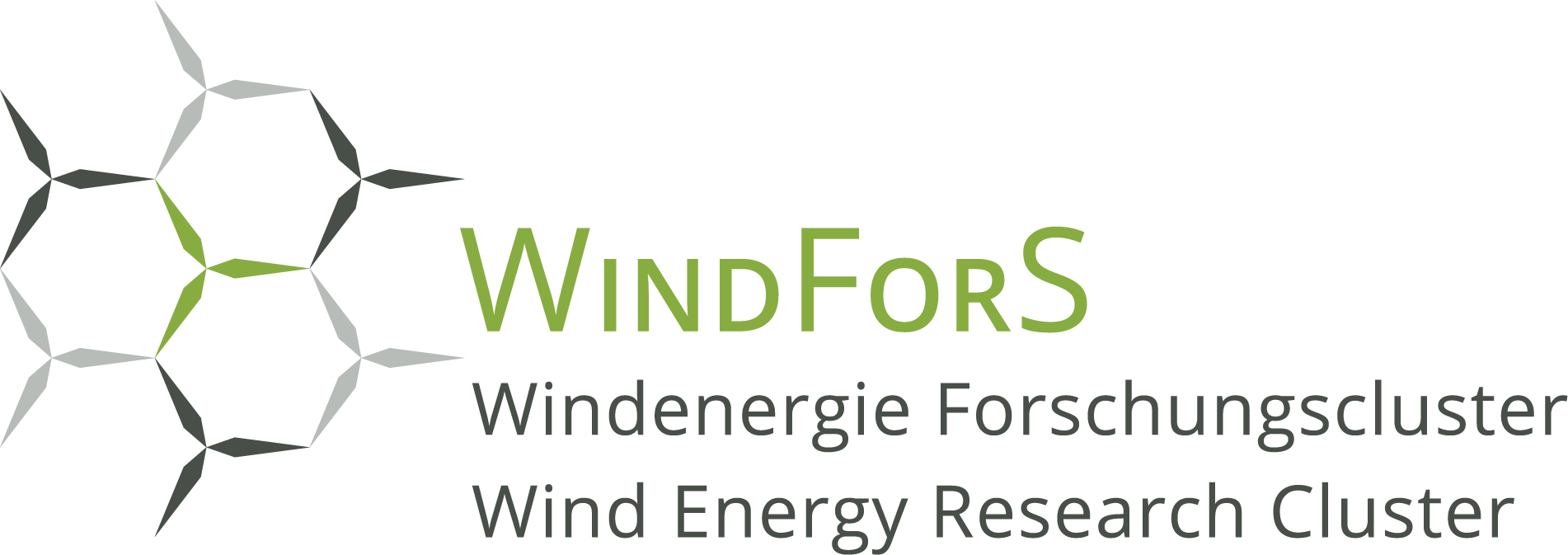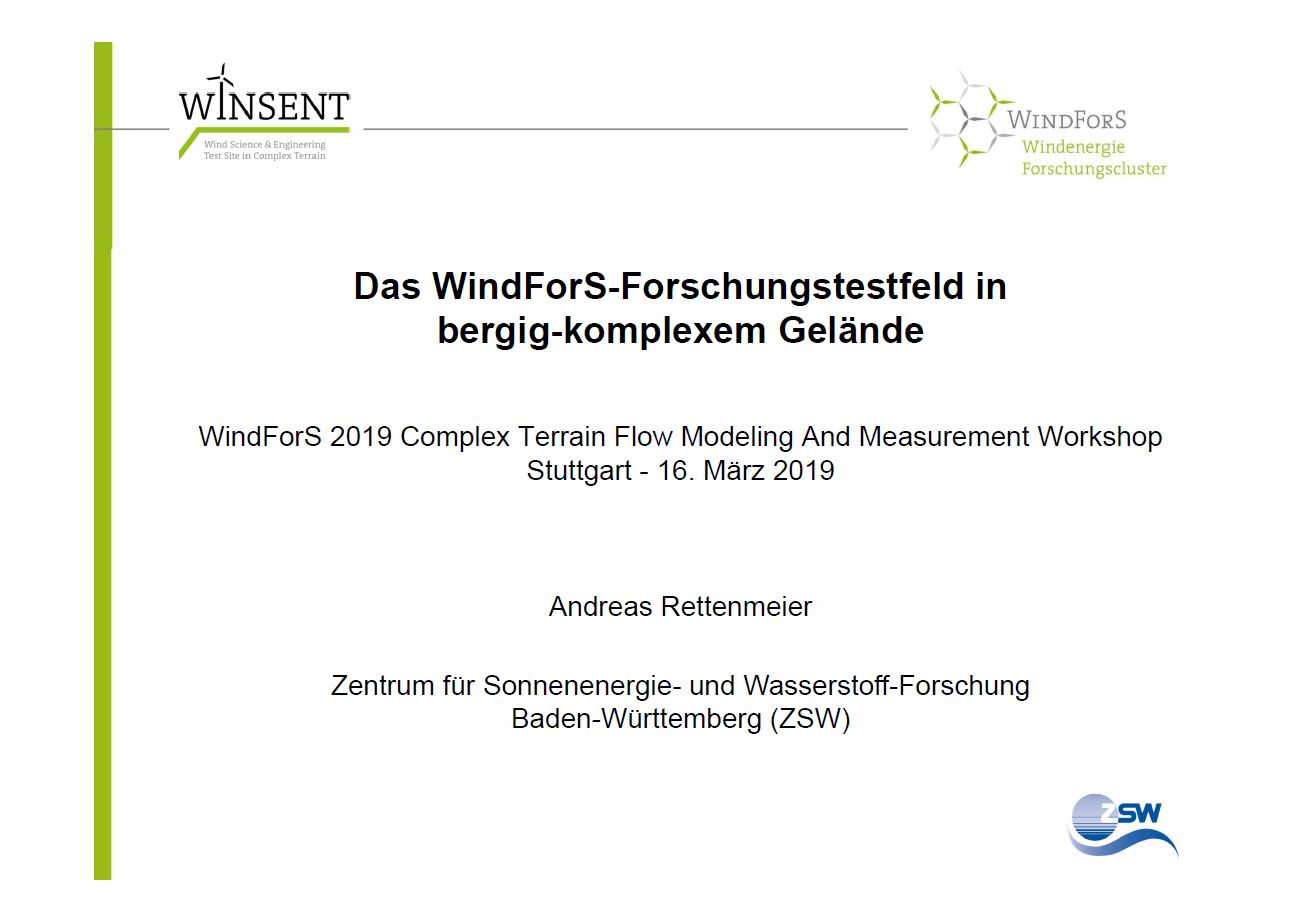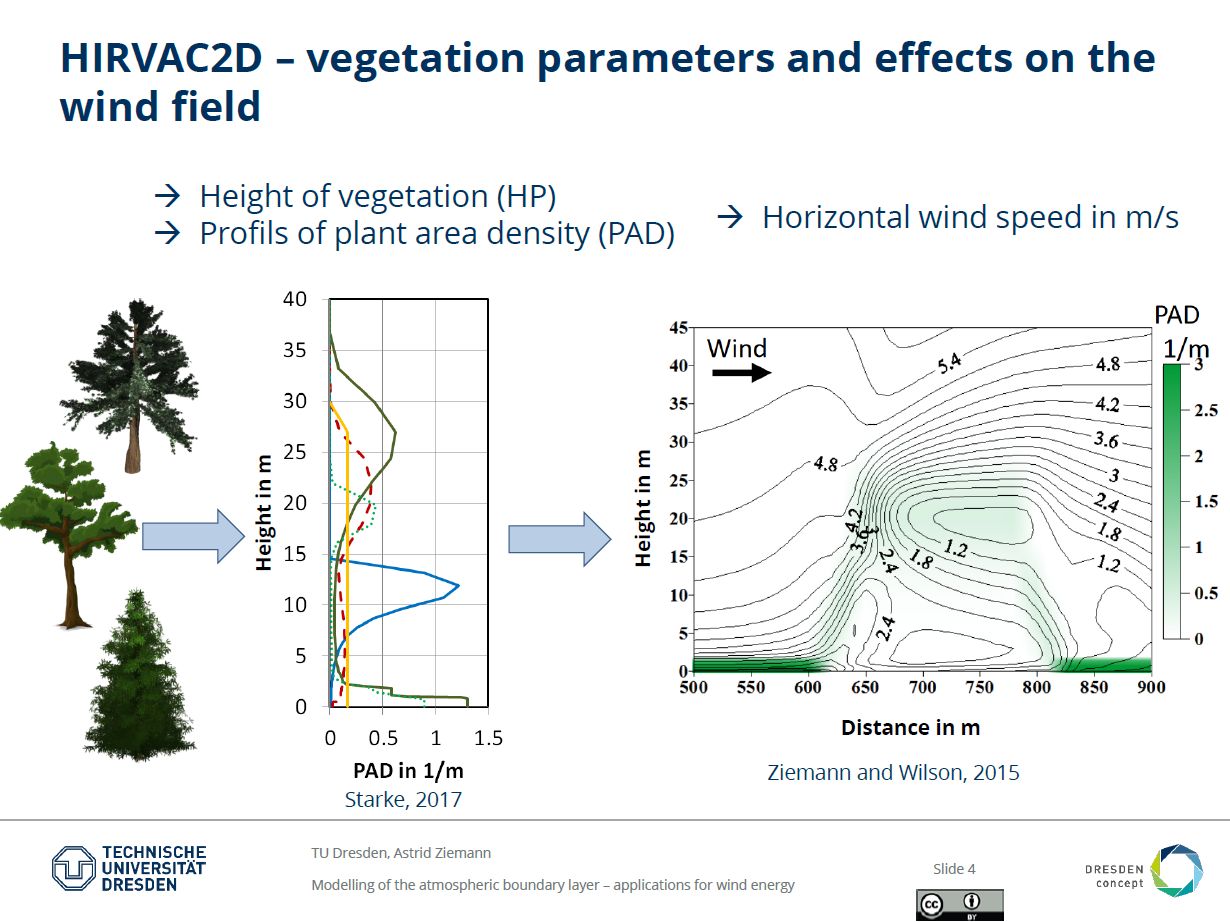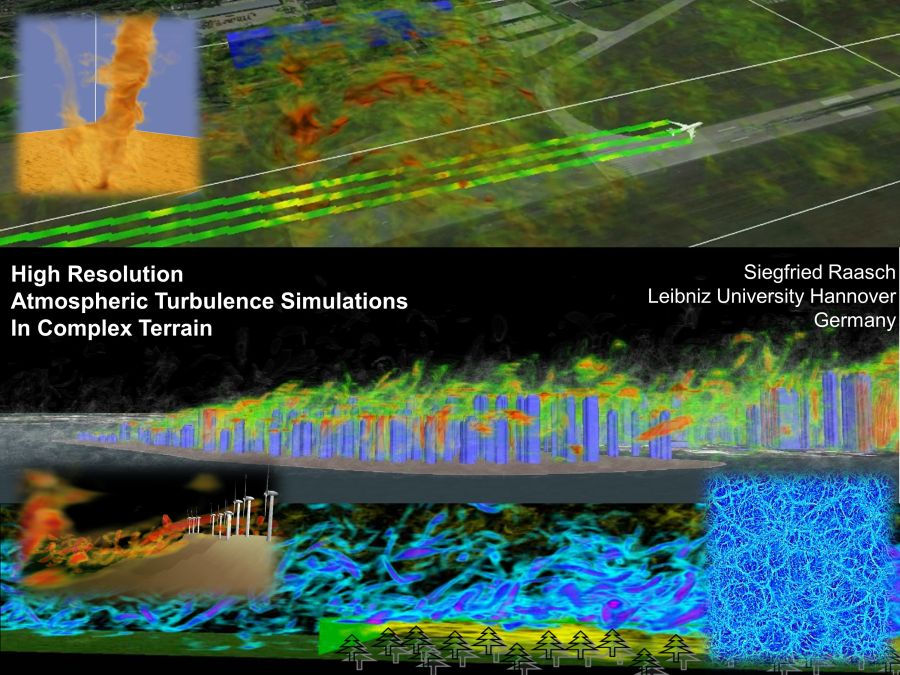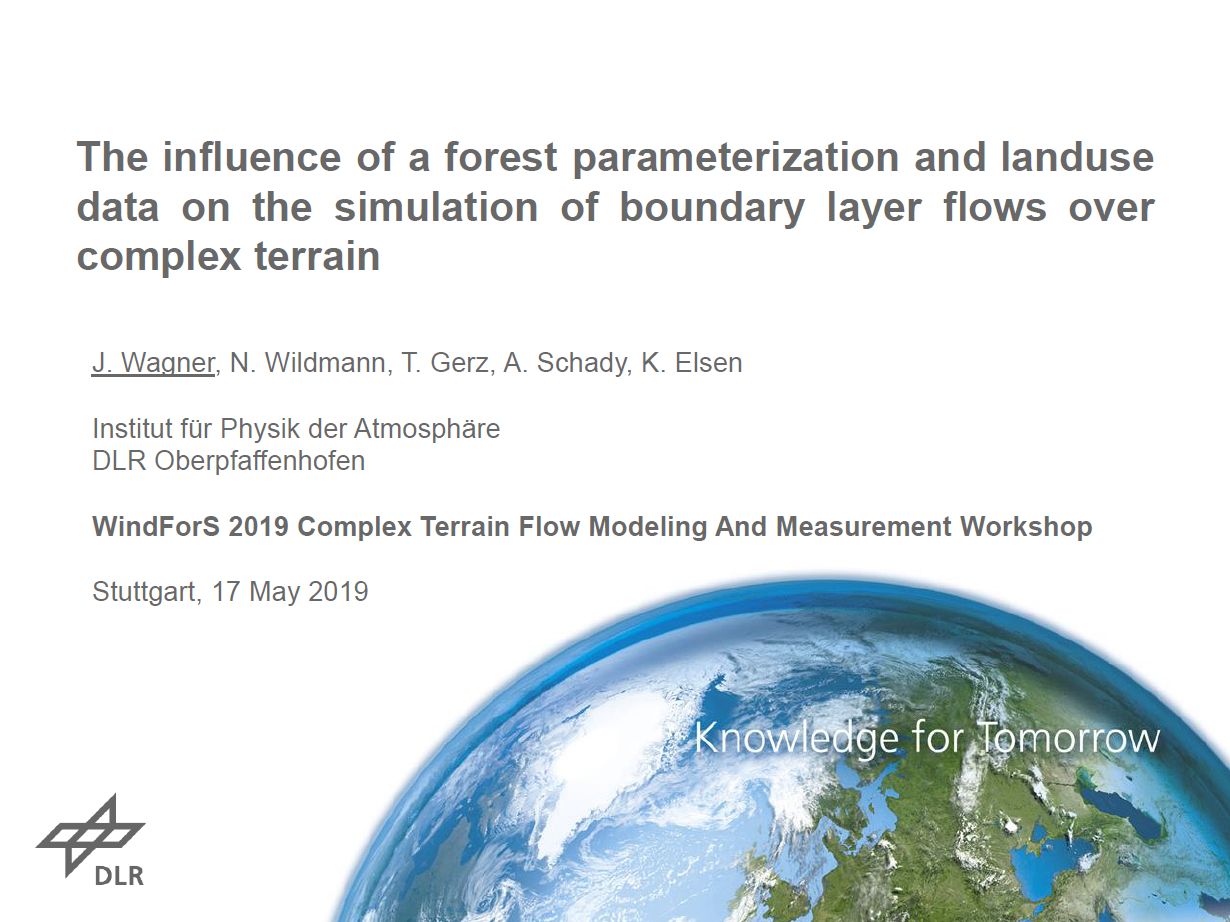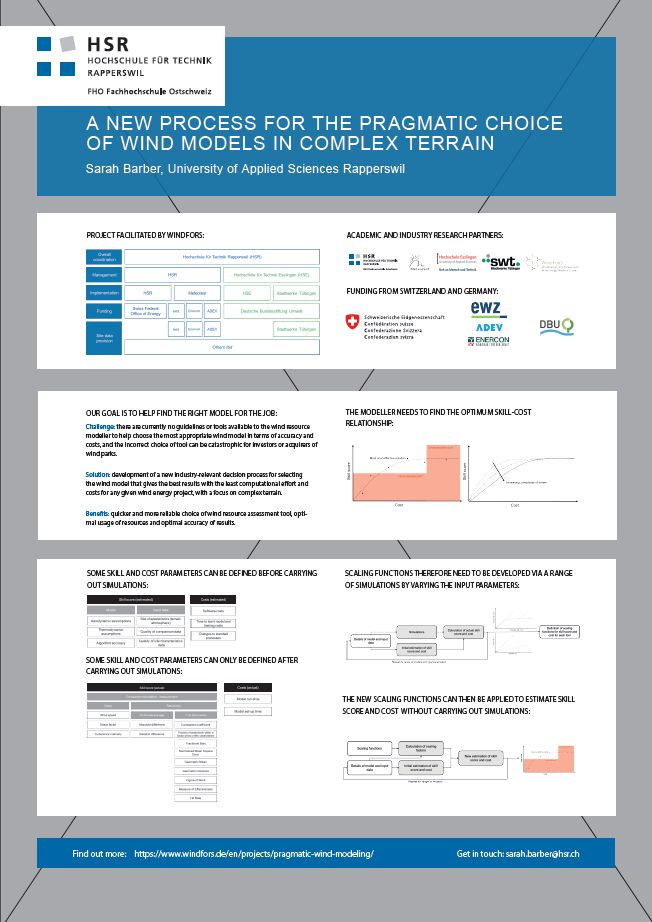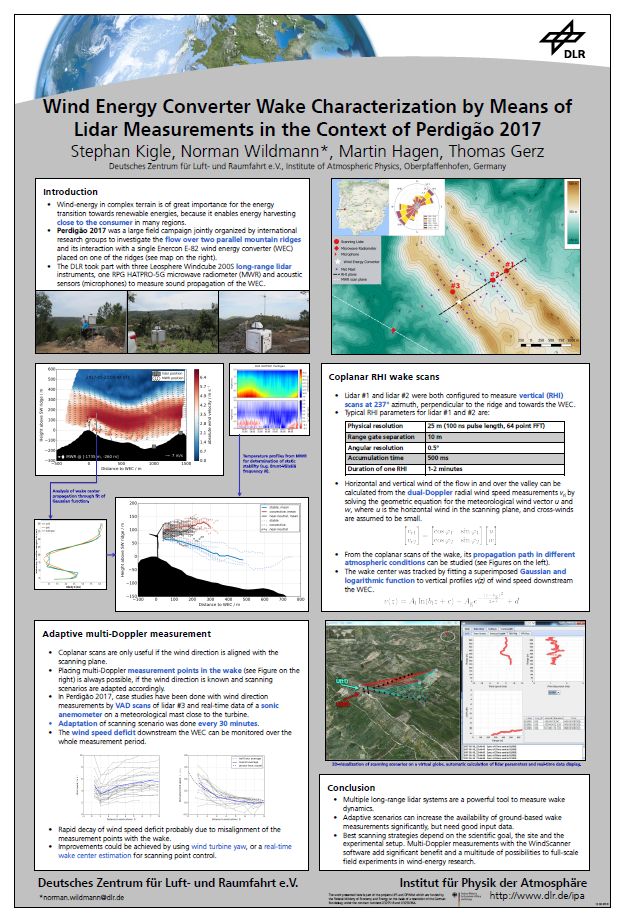About 40 people from across Germany and Switzerland gathered at the University of Stuttgart on 17 May 2019 to explore measuring and modeling wind fields in complex terrain in a Workshop hosted and led by WindForS. A selection of the presentations and posters can be found below.
More information about the meeting can be found here.
If you’d like to join us at a future WindForS meeting, please keep an eye on www.windfors.de/events/.
Das WindForS-Forschungstestfeld in bergig-komplexem Gelände
Andreas Rettenmeier (ZSW)
The presentation describes the WindForS test site that is taking place in the Swabian Alps.
More information about the test site can be found here.
Modelling of the atmospheric boundary layer – Applications for wind energy
Astrid Ziemann, TU Dresden
The presentation describes the atmospheric boundary layer model HIRVAC (High Resolution Vegetation-Atmosphere Coupler) and its applicability for wind power assessment. Properties of the wind field above 100 m a.g.l. (e.g., nocturnal low-level jets) depending on heterogeneous
landuse parameters and its influences on wind climatologies are in the focus of the presented simulation results.
High Resolution Atmospheric Turbulence Simulations In Complex Terrain
Siegfried Raasch, Leibniz University, Hannover
The presentation describes the how the parallelized LES-model PALM has been used for simulations of wind fields in complex terrain including urban areas, near forest edges, around geometric arrays, and near wind turbines. Results from validation studies are also provided for reference.
The influence of a forest parameterization and landuse characterisation on simulated boundary layer flows over complex terrain
Johannes Wagner, DLR
The presentation shows results of the Perdigao campaign and the impact of a forest parameterisation and landuse type on WRF simulations of low-level jets (LLJ) over complex terrain. Simulated wind speeds near the surface are reduced and LLJs are considerably improved compared to lidar observations when additional forest drag is used in WRF.
A new process for the pragmatic choice of wind models in complex terrain
Sarah Barber, University of Applied Sciences Rapperswil
The poster gives an overview of the new, joint Swiss and German “pragmatic wind modeling” projects, facilitated by WindForS.
Wind Energy Converter Wake Characterization by Means of Lidar Measurements in the Context of Perdigão 2017
Norman Wildmann, DLR
The poster gives an overview of the Perdigao campaign 2017 and the lidar measurements made by DLR. Different scan techniques were used to characterize the wake of a single wind turbine in complex terrain.
This poster was previously presented at the 2017 American Geophysical Union Fall Meeting.
Using these presentations and posters
WindForS supports the principles of FAIR research: we believe that the results from research should be findable, accessible, interoperable, and reusable.
To help make research findable and accessible we encourage participants in our events to archive copies of their presentations and other materials. They can leave them with us, or store them in repositories at their own universities and research institutions. We then provide links through to those documents.
An even better option is to use repositories that provide a DOI and link research output to researchers through the ORCID and other identifiers. This allows researchers to build up a comprehensive publications record. While there are many options, we have found that zenodo.org provides a good set of features for authors and users.
We ask anyone using or referencing presentations from this event to respect any licensing conditions, to acknowledge the presenters using the information provided, and to reference DOIs (where given).
